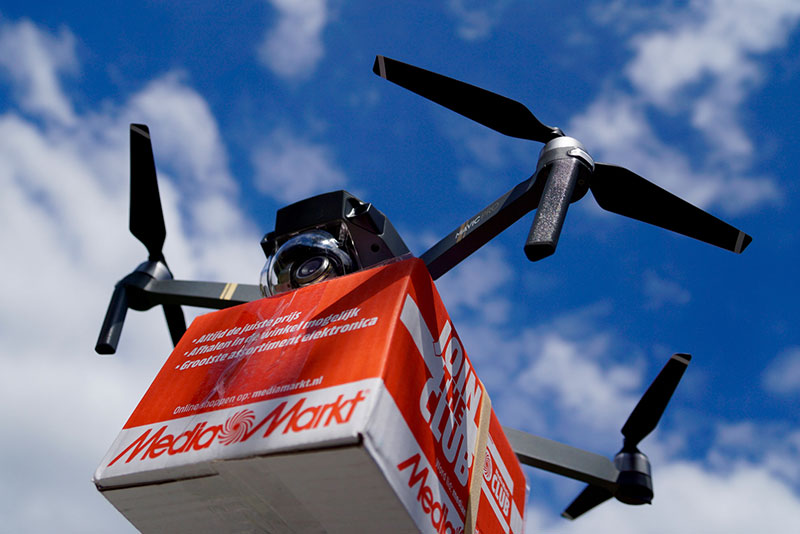
By Tiffany Hsu
Delivery by drone sounds cool and futuristic, but when it comes to being environmentally friendly, does it really beat a truck drop-off?
It depends, according to researchers from the University of Washington.
A study by transportation engineers from the school found that aerial drones emit less carbon dioxide in certain scenarios, such as when they’re required to fly short distances or have a limited number of stops.
But lengthen the route and add in more customers, and trucks take the advantage. That’s because the hulking ground transport can accommodate large, weighty loads in a single trip.
Aerial drones, in their current state at least, don’t have that luxury. The machines are small – the researchers conducted their study with the assumption that drones can only carry one package at a time and have to fly back and forth to distribution depots between deliveries.
And the heavier the cargo, the harder a drone has to work to stay aloft, burning through fuel more quickly.
Researchers concluded that drones are probably best suited for short-hop flights in sparsely populated areas or in controlled environments such as a military base or school campus. Or, the technology can be paired with trucks, using a system that has trucks depositing cargo at a central hub and then a fleet of drones dispersing the goods to their final stop.
“In the end, I was amazed at how energy-efficient drones are in some contexts,” said senior author Anne Goodchild, an associate professor of civil and environmental engineering at the University of Washington. “Trucks compete better on heavier loads, but for really light packages, drones are awesome.”
The study compared carbon dioxide emissions and miles traveled across 10 real-world scenarios in Los Angeles. Researchers, working off earlier models used to compare the environmental footprint of grocery delivery services to personal shopping trips, looked at data from 330 service zones, each with 50 to 500 package recipients.
The findings will appear in an upcoming issue of the Transportation Research Part D journal.
Limiting greenhouse gas emissions is an increasingly important priority for the freight industry, which is a notoriously heavy polluter. Major truck manufacturers – Daimler, Kenworth, Mack and more – have pledged to build more aerodynamic, fuel-efficient vehicles, in part to comply with increasingly stringent climate change regulations and also boost performance metrics.
But for last-mile delivery, drones seem promising. Retail and technology behemoths such as Wal-Mart, Amazon, 7-Eleven and Google are investigating the technology and running test flights.
Last summer, the Federal Aviation Administration approved new rules that allow commercial drones to operate in certain conditions. More companies – such as electric vehicle maker Workhorse earlier this week – are unveiling new flight concepts that can be used to deliver cargo for medical emergencies, military operations, agricultural needs and more.
In February, shipping giant UPS launched its first test, using a small Workhorse drone autonomously to deliver a package to a rural home in Lithia, Fla., and then return to a UPS vehicle while the truck driver continued along the route to make the next delivery.
But mass market drone delivery is still far away. Legal and logistical knots abound, and privacy and infrastructure concerns still need to be addressed.
“Given what we found, probably the most realistic scenario is for drones doing the last leg of the delivery,” said Goodchild, who also directs the UW Supply Chain Transportation and Logistics Center. “You’re probably not going to see these in downtown Seattle anytime soon. But maybe in a rural community with roads that are slow and hard for trucks to navigate and no air space or noise concerns.”